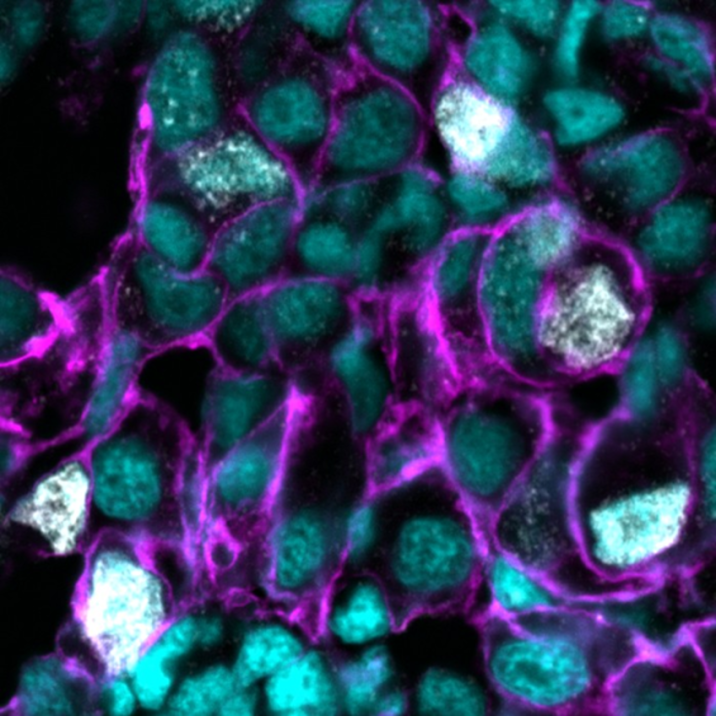Aussie researchers have developed a novel therapeutic approach that disrupts a fundamental cellular process in cancer cells, halting the growth of aggressive tumours while sparing healthy tissue.
A team from the Walter and Eliza Hall Institute of Medical Research has identified a promising new way to tackle some of the deadliest cancers by targeting a little-known process called minor splicing.
Using zebrafish and mouse models, as well as human lung cancer cells, the research is the first to demonstrate the impact of inhibiting minor splicing in in vivo models of solid tumours.
Published in EMBO Reports this month, their study demonstrates that blocking minor splicing, a specialised form of RNA processing, significantly slows tumour growth in liver, lung and stomach cancers, particularly those driven by KRAS mutations, which rank among the most common and challenging cancer drivers.
Minor splicing is responsible for processing a small but critical set of genes involved in cell growth and division.
Disrupting this process forces cancer cells into crisis, causing DNA damage and activating the p53 tumour suppressor pathway, which can halt cell division or trigger cell death. Healthy cells remain largely unaffected.
WEHI laboratory head Professor Joan Heath said scientists had long known that KRAS was central to many aggressive cancers but have struggled to turn that knowledge into broadly effective treatments.
“KRAS mutations come in a variety of flavours, making them extremely hard to treat, so even with decades of scientific effort there has been only limited progress so far,” she said.
“But our approach is different. Instead of trying to target specific mutations that may only apply to a subset of patients, we’re disrupting a fundamental process that these fast-growing cancers rely on.
“This research offers a new way to tackle a problem that’s long resisted conventional approaches, with the potential to help a much wider group of patients.”
The researchers’ interest in minor splicing arose from a focused genetic screen in zebrafish, which yielded several mutants with impaired growth of the developing liver, pancreas and intestine.

They demonstrated that one of these mutants harboured a single nucleotide variation in both copies of rnpc3, encoding a 65kDa RNA-binding, protein component of the minor spliceosome. In mice, they showed that Rnpc3 is essential for pre-implantation development and that induced recombination of both alleles of the Rnpc3 locus in adults severely impairs the homeostasis of the gastrointestinal epithelium, hematopoietic compartment and thymus.
“Our results indicated a heightened requirement for minor splicing in tissues undergoing rapid, continuous cell cycling, compared to quiescent tissues, and prompted us to think that minor splicing may be an Achilles’ heel of all highly proliferative tissues, including cancers,” they wrote.
“The research in animal models and human cells demonstrates the potential of this strategy to target cancers driven by mutations in common cancer-causing genes.”
The study found reducing the activity of a protein encoded by the RNPC3 gene – an essential component of the minor splicing machinery – significantly slowed tumour growth in liver, lung and stomach cancers.
“Just by halving the amount of this protein, we were able to significantly reduce tumour burden,” said first author and WEHI senior research officer Dr Karen Doggett.
“That’s a striking result, especially given how resilient these cancers usually are.”

The study also revealed that disrupting minor splicing triggers the p53 tumour suppressor pathway, a critical defence mechanism in the body’s fight against cancer.
Dubbed the “guardian of the genome”, the p53 protein responds to DNA damage by stalling cell division, initiating DNA repair or triggering cell death. This well-known pathway is frequently mutated or disabled in many cancers, allowing these cells to grow unchecked.
“Blocking minor splicing leads to DNA damage and activates this critical defensive response, which means cancers with a functional p53 pathway are likely to be especially vulnerable to this strategy,” Dr Doggett said.
Related
“This opens the door to treatments that could be both more effective and less toxic, offering hope for patients with aggressive cancers that currently have limited options.”
To search for compounds that might inhibit minor splicing, the research team turned to the National Drug Discovery Centre headquartered at WEHI, with a screen of over 270,000 drug-like molecules identifying several promising hits.
“We’ve validated minor splicing as a compelling therapeutic target – now the challenge is to develop a drug compound that can safely and effectively inhibit it,” Professor Heath said.
“One of the strengths of this study is the breadth of models and tumour types we used.
“We didn’t just test one kind of cancer or use one analysis method. This diversity in our approach gives us confidence that our strategy could be relevant across many forms of cancer, and not just in a narrow set of conditions.”





